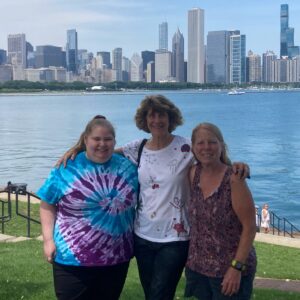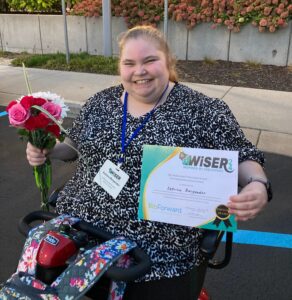Patients Needed for International Childhood Takayasu Study
My name is Katrina Bargender, and I was diagnosed with Takayasu arteritis when I was 14 years old. My first symptom was vision loss in my left eye, which unfortunately was never restored. I was admitted to my local children’s hospital with severe anemia, high blood pressure, elevated inflammatory markers, and unintentional weight loss. I was discharged after a week with a diagnosis of Takayasu arteritis and a prescription for prednisone and methotrexate.
My days and weeks became filled with appointments and a search for how to best treat my new and rare disease. When prednisone and methotrexate were not working to control my disease, my family and I traveled across state lines to a larger city with a bigger hospital where we learned about biologics that were effective in reducing the amount and duration of the use of prednisone.
It was there that we met my first best doctor, Dr. Linda Wagner-Weiner who has helped track my progress. She reached out to me and my mom in January 2024 to invite us to participate in the creation of an international pediatric Takayasu registry to provide our perspectives as a patient and parent. We happily accepted the invitation and began participating with the International Childhood Takayasu Study Group (IcTAK). 
The workgroup includes doctors from Wisconsin, Illinois, Ohio, Pennsylvania, British Columbia (Canada), Croatia, and Turkey. It is incredible to have the opportunity to be involved in a project of this magnitude. The doctors are brilliant and have experience treating children with chronic inflammatory rheumatic diseases. I think having patient and parent perspectives are important to ensure day-to-day patient impacts are not overlooked.
Takayasu Arteritis is a rare disease known to be most common in young adult women. However, about a third of patients are diagnosed as children. While a number of studies and guidelines exist for adult-onset TAK, further research is needed in the pediatric population to help guide families and pediatric rheumatologists. Because it is such a rare disease, most information on childhood-onset Takayasu arteritis comes from small collections of patients within one center or country.
The International Childhood Takayasu Study was created as a collaboration between the major North American and European pediatric rheumatology research alliances. Their mission is to help answer questions by trying to capture the experiences of patients diagnosed and treated around the globe. The study hopes to include patients diagnosed since 2018 to help provide an accurate picture of what newly diagnosed patient families might expect as treatments have evolved.
Shortly after I was diagnosed, my mom found an observational study being conducted at the National Institutes of Health (NIH) in Bethesda, Maryland. She submitted my hospital records, radiology reports, and all other documentation, and I was accepted into the study. We traveled to the NIH where I received a PET scan and was found to have such significant disease activity that I was admitted to the pediatric unit in the hospital and remained inpatient for a week while my treatment was evaluated and changed. I had permanent damage to the major blood vessel in my abdomen, narrowing in both of the arteries leading to my kidneys, and damage to the arteries in my neck.

I was diagnosed with Takayasu arteritis halfway through my freshman year of high school. I missed most of the second half of that school year due to an overwhelming number of doctor appointments, infusions, and not feeling well. I went to school part-time in my sophomore and the beginning of my junior year, until it was too difficult to attend in person. I finished high school as a homebound student.
I was well enough to apply to and attend college to study biomedical sciences. I successfully completed two years of classes before my disease relapsed and closed the main artery to my right arm. I had to take a year-long leave of absence to attend frequent doctor appointments and experiment with new medications before I could return to the classroom.
This past December, I graduated with my bachelor’s degree and was recognized as a distinguished graduate with the highest honors. However, the fatigue I experienced meant I missed a lot of the social aspects of college. I often had to choose rest instead of attending activities and hanging out with friends.
Through our participation in the registry, we hope to answer simple but necessary questions like characteristics at diagnosis (my personal story of vision loss is apparently very unusual) and initial medication choices. A major focus will be medication choices and outcomes over the first year of disease – getting detailed information on steroid dosing and length will be very useful from my perspective.
Another focus is comparing some of the “scoring systems” that doctors might use to manage the balance of not over treating or under treating active disease, which is so important to us all. We hope that this is just the beginning.
How to get involved:
If you or your child were younger than 18 years old at the time of your diagnosis of Takayasu arteritis, and were diagnosed after January 1st, 2018, then we are interested in including you in this cohort.
Please contact your Rheumatologist or Pediatric Rheumatologist to alert them to this project and ask them to contact Dr. James Bistolarides at jbistolarides@mcw.edu for more information on the study and its goals, and resources to assist with any Institutional Review Board (IRB) submissions that are necessary.
